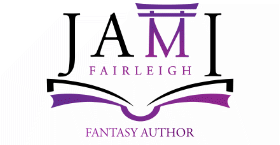
How to Animate Marketing Content for Your Books

Have you ever wondered how people animate content to market their books? As I’ve deepened my interest in digital art, I embarked on a journey to learn how it’s done.
Here’s one I made to celebrate the 1 year publication anniversary for Oil and Dust.

Happily, it was easier than I expected, so I thought I’d share how you can animate your content too!
Make a Plan
Because your animation will require a LOT of images, your first step is to decide what you want to animate. I sketched a series of images to give myself a plan.
My plan was to “paint” my cover onto a page, then “draw” the words and arrows. I use a png of a paintbrush in my books as scene dividers, so I pulled that same paintbrush into my animations.
Create The Images
Once you know what you want to animate, the next step is to create the images you’ll need. I created a series of jpg files, but you could use a lot of different file types, including GIF, JPG, PNG, APNG, HEIC, MNG, FLIF, AVIF, or WebP.
I use Affinity Designer, creative graphic software developed by Serif. It’s one of three products in their creative suite. I chose them because they have terrific support, a LOT of instructional videos (from Serif and from others on YouTube), and because they sell a lifetime license. Not only is their software modestly priced (currently $55 USD), but they occasionally also have sales. I purchased both Affinity Photo and Affinity Designer at half-price.
Regardless of the software you use, it’s time to create your images.
The More Images You Have, The Smoother Your Animation
I had a lot of fun making my images, but it took some time to figure out how many I needed (52!) to animate my content. I learned to export jpg files as I went; it’s better to have too many images than too few!
As an example, here are the first three images in my animation.

The text and arrows required many exports to make it look like the paintbrush was really drawing the lines. Here are the five images I used to animate the phrase “Art Magic”.

Test Your Animation
After experiencing several “premature animations” I learned it was faster to preview the jpgs I wanted to animate on my computer before stitching them together. This step let me revise the animation and make changes more quickly.
To easily preview your files, organize them in a single folder. I found it easiest to name the files so my computer would automatically order them correctly. Once they are in a single folder, open the first image with your photo viewer and flip through all the images you plan to animate.
I saved myself a lot of time after I added this step. Here’s the highly complex naming strategy I used.

Animate Your Files!
Once you have your images ready, you can animate your content.
There are multiple sites that will animate your files, but the one I used is EZGif. It’s free and simple to use.
Upload your images, then the site will stitch them together and make a gif file. Next, change the time delay between each image until you’re happy with the final product. The preview feature was super useful during this step.

Last, I saved and downloaded the original gif before sending my project through their optimizer. The optimizing step compresses the file. You lose some image quality through compression, but the size of the final gif file is also more reasonable.
You’re done!
What Will You Animate?
I had a lot of fun learning how to do this work. While my level of skill is nowhere near the talent of the book cover animators I’ve worked with, it makes me happy to know I can handle simple animations on my own.
Have you animated anything to market your books?
Header Photo by Damian Zaleski on Unsplash
